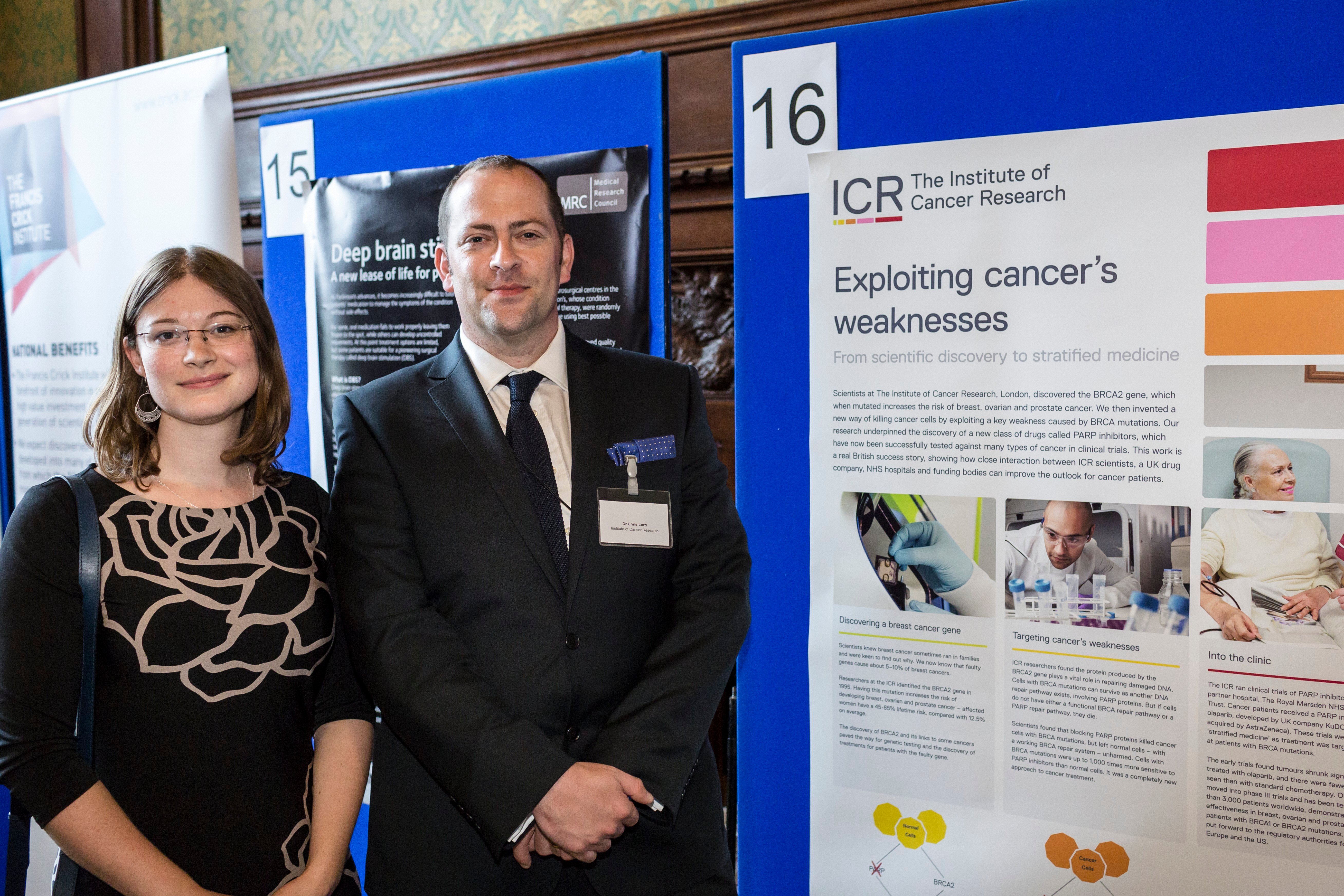
We often hear the UK life sciences sector described as a vibrant ecosystem, bringing together government, charity and private sector funding. It’s a comment we’ve made ourselves before, and is widely seen as a real strength for UK science.
This week I was lucky enough to attend a Summer Reception at the House of Commons which really drove home the point – showcasing the results of these sorts of collaborations and the benefits of investing in medical research.
MPs, Peers, research funders, industry representatives and medical researchers gathered at the Summer Reception, organised by the All Party Parliamentary Group on Medical Research.
I attended the event with Dr Chris Lord, a team leader here at The Institute of Cancer Research, who works on breast cancer genetics and ways of exploiting specific genetic weaknesses of cancer cells.
He presented research conducted here at the ICR which has led to a new class of drugs called PARP inhibitors – which have gone on to show remarkable effectiveness in clinical trials of patients with breast, ovarian and prostate cancer.
Around 20 years ago, scientists at the ICR discovered the BRCA2 gene, which when mutated increases the risk of breast, ovarian and prostate cancer. This discovery of BRCA2 and its links to some cancers paved the way for genetic testing and the discovery of treatments for patients with the faulty gene.
ICR researchers went on to find that the protein produced by the BRCA2 gene plays a vital role in repairing damaged DNA, and found a way to turn this weakness against cancer cells.
Cells with BRCA mutations can survive as another DNA repair pathway exists, involving PARP proteins. But if cells do not have either a functional BRCA repair pathway or a PARP repair pathway, they die.
Scientists found that blocking PARP proteins killed cancer cells with BRCA mutations, but left normal cells – with a working BRCA repair system – unharmed. Cells with BRCA mutations were up to 1,000 times more sensitive to PARP inhibitors than normal cells. It was a completely new approach to cancer treatment.
This research underpinned the discovery of a new class of drugs called PARP inhibitors, which have now been successfully tested against many types of cancer in clinical trials. You can read more about this work in a booklet which accompanied the event – A Healthy Future for UK Medical Research.
The event coincided with the launch of a new report on the economic benefit of cancer research in the UK, which several of the speakers made reference to in their talks. Cancer Research UK covered the launch of the report on its blog which you can read here. The key message for me was that for every pound invested in cancer research, the UK economy gains 40p every year afterwards, providing economic return as well as health gains.
The work that Dr Lord presented at the Summer Reception is a great example of how an initial discovery – that of the BRCA2 predisposition gene – can have just this sort of impact. The discovery has enabled families with a history of breast cancer to be informed about their risk, guiding decisions over preventative measures and personalised cancer treatment, and laid the groundwork for developing novel forms of therapy for BRCA-associated cancers.
We think this work is a real British success story, showing how close interaction between ICR scientists, a UK drug company, NHS hospitals and funding bodies can improve the outlook for cancer patients.
comments powered by